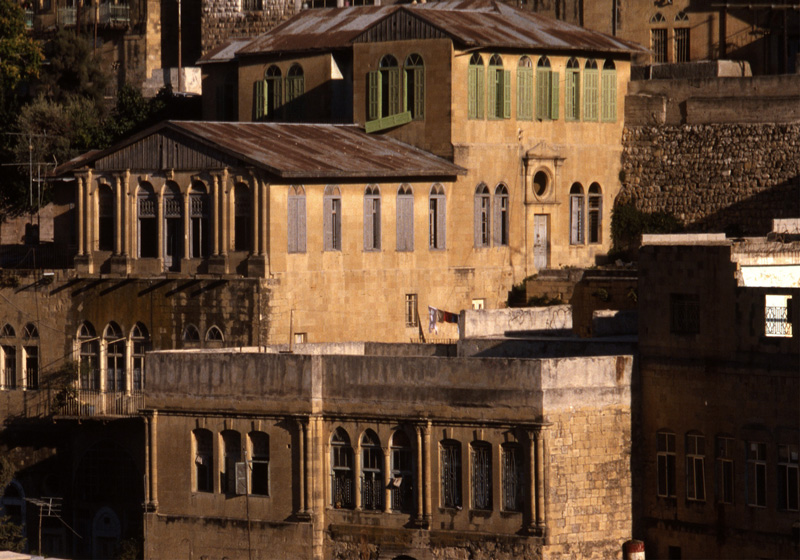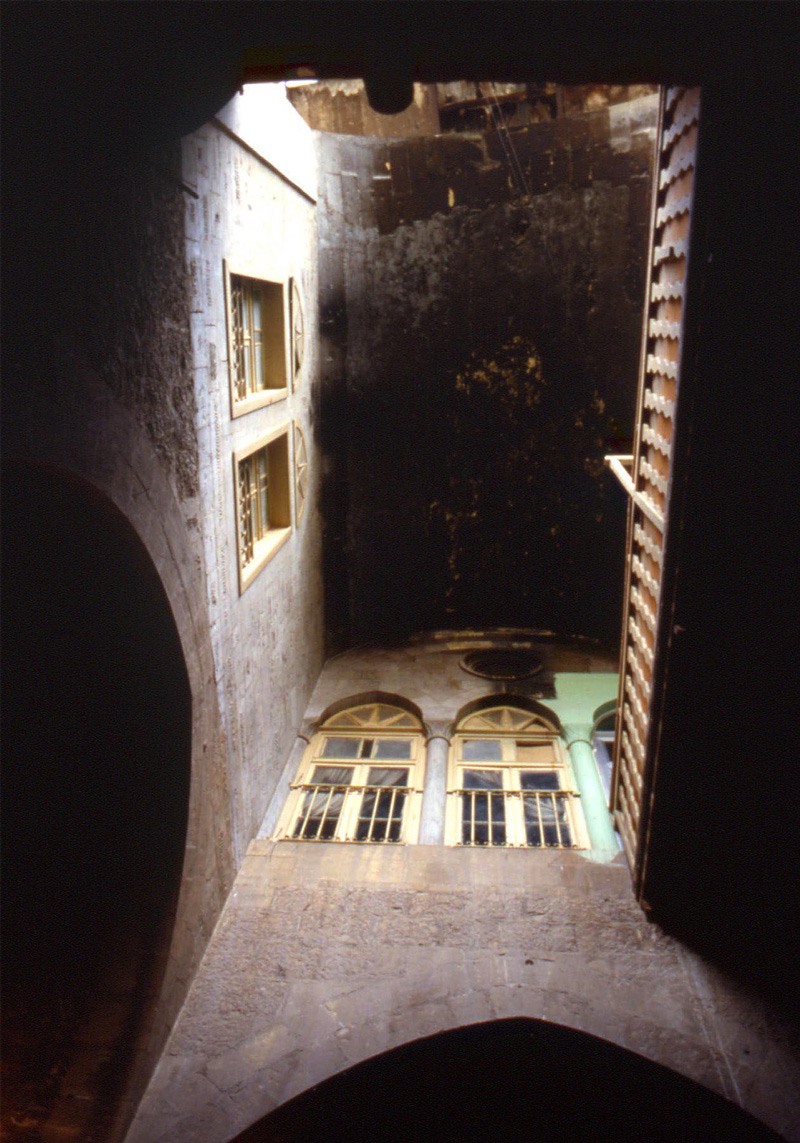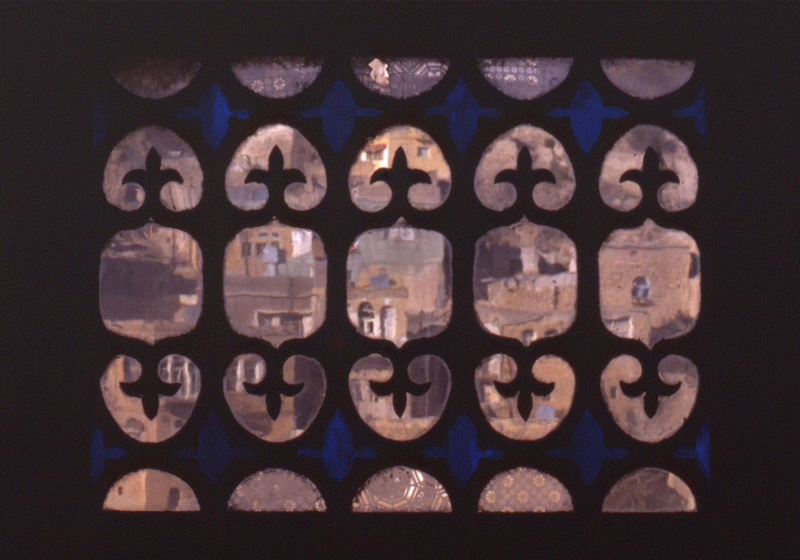Soft Ornaments
Among the cities, towns and villages of Jordan, Salt has a unique environment. Here is one of the Kingdom's most complete stretches of traditional architecture. Besides this relatively intact architectural fabric with its own distinct style, Salt also represents the most lived-in site of architectural heritage in Jordan. Built on hillsides overlooking the central souq below, Salti houses are relatively ornate and clearly represent the most urban of Jordan’s traditional built environments.
Here houses sit on edges. Some of the neighborhoods in Salt are on such a sharp inclination that houses appear as if they are hung on a wall; with this quality the hillsides define the central space of the souq, like walls in a museum surrounding a central hall. This vertical layout has helped shape a special sense of common life, create visual connectedness that enhances social ties, and heighten the overall feeling of sharing one single, extended, introverted house.

Besides the display of front elevations of houses, the steep cliffs also displayed well-proportioned negative spaces between buildings. From almost any point in town you can see stairs, alleys, and narrow streets connecting doorways, courtyards, gardens and open natural hillsides; with the warm-colored stone and the dry summer grass, the result is somewhat reminiscent of a painting or a relief in monochromatic ochre.

Typically, the houses of Salt would face the central space of the wadi with a balcony. Just behind the dainty railings, the concentrating of most of the architectural ornaments on this front would further enrich the balcony. Houses seem to have a competition on display; here masons showed their best skills, reaching a level of details that came close to indoor decorations or even carvings on furniture. The builders of Salt listened to the hints of their soft yellowish stone and the stone happily accepted their creations.
Of the most important elements that unifies the old city, the yellow stone remains unique to Salt. It is basically a marly limestone that comes from quarries just northwest of the town centre, on the eastern sides of Al Midaan valley. The stones were quarried from caves and were said to be so soft when extracted from the mountain that one can cut them with a knife. When freshly cut they were closer to white, exposing them to the elements would give them their golden-yellow tint and some hardness. It is the softness of this stone that tempted the masons of Salt to express rich and intricate details, mixing elements of styles such as Venetian, Baroque, Romanesque, Arabesque, and some faint hints of Gothic.

Salt material also helped develop patterns of stone-dressing only seen in these houses. Each stone would be treated like a framed composition, with minimal gaps or pointing in between. So good were the results in Salt stone that it became a trend to bring to Amman, during the 1920s, as pre-shaped arch stones, columns, and decorative cornices. Such elements in this stone are easily spotted in some of the older houses of downtown Amman and in Jabal Amman.
Besides its elegance, this architecture can be seen a Jordan’s last example of buildings that did not depend on manufactured construction materials. There houses, especially the older ones, used gravity and not steel to hold their arched and vaulted ceilings. They followed the principles of “added value” rather than the current commercial trends. They were built in a labor-intensive manner, allowing handicrafts to produce complete towns and not just prayer beads or sand bottles. The ingenious arches and vaults have turned gravity, the enemy of structures, into a servant that holds the vaulted stones together. Unlike reinforcement bars, which are made of imported steel, gravity has a longer life, is environmentally cleaner to extract, and if the structure is demolished is fully biodegradable.

In the architecture of Salt hides some valuable hints to the role of architecture as a social institution. This beautiful town should be revisited and reconsidered, beyond turning its message into a shallow celebration of fashionable aesthetics.
Easy drive, suitable for children and can be combined with visiting scenic Wadi Shuaib, the heights of Nabi Yosha’, or the Mediterranean hills of Zay and Jil’ad. The drive to Salt is straightforward, 20 minutes from west Amman, the way back could be through the village of Fuhais where lunch or a dinner is a good idea. Salt is an excellent environment for photography; the sharp corners of buildings as well as their intricate details do wonders in black and white.